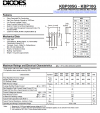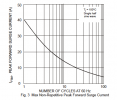D
Deleted member 46664
Guest
Just wondering: there has been some discussion on this forum about the downside of using single-ended input on the PA5. Is there any chance that using a mono-6,5mm to RCA adapter to connect a single-ended device could cause this noise? For now, I have disconnected my (single-ended) phono pre-amp from the PA5, until this issue has been thoroughly investigated.
It is possible. There is some reason (from another user's investigation) to believe the inputs are not wired for the TS/single ended cable trick.
There are both transformer and active adapters available that will convert single ended to true balanced signals. They're not terribly expensive. Give Amazon a search...


